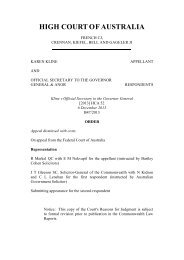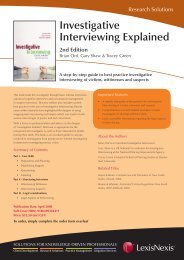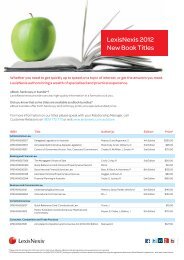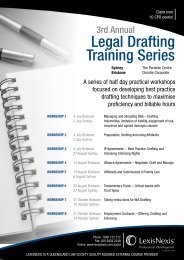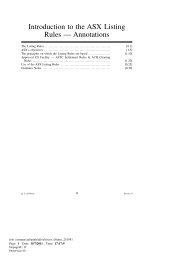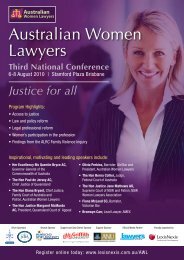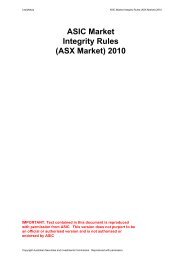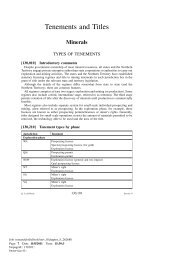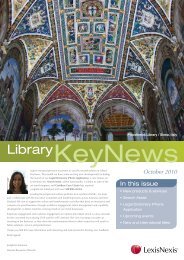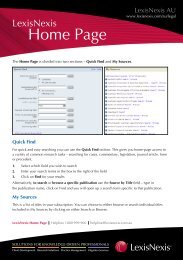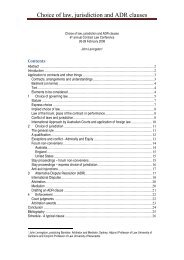Chapter 2 - LexisNexis
Chapter 2 - LexisNexis
Chapter 2 - LexisNexis
Create successful ePaper yourself
Turn your PDF publications into a flip-book with our unique Google optimized e-Paper software.
e consumed on the premises, and where such a recipient may be orbecome seriously affected by drugs to the point where his or her lifemay be endangered, the drug supplier has a duty to conduct himselftoward the drug recipient without being grossly or criminallyneglectful.” ‘Return to table of contents<strong>Chapter</strong> 1010.15 Cases regarding the exclusion of the plaintiff’s evidence• Neal v Ambulance Service of New South Wales [2008] NSWCA 346: Seediscussion at [40] – [42] regarding the practical effect of the exclusion:“Whatever the real purpose of the provision, the issue for determination ishow a court is now to identify what course the plaintiff would have taken,absent negligence. That assessment might include evidence of the following:(a) conduct of the plaintiff at or about the relevant time; (b) evidence of theplaintiff as to how he or she might have felt about particular matters; (c)evidence of others in a position to assess the conduct of the plaintiff and his orher apparent feelings or motivations, and (d) other matters which might haveinfluenced the plaintiff….Properly understood, the prohibition on evidencefrom the plaintiff about what he or she would have done is of quite limitedscope. Thus, the plaintiff cannot say, “If I had been taken to hospital I wouldhave agreed to medical assessment and treatment”. Indeed, as the NegligenceReview recognised, such evidence would be largely worthless. However, theplaintiff might have explained such evidence along the following lines: “Irecall on the trip to the police station that I began to fell less well; my state ofinebriation was also diminishing; I began to worry about the pain in my head….”…. That evidence (entirely hypothetical in the present case) would not beinadmissible. If accepted, it might provide a powerful reason for discountingany inference as to future conduct drawn from the past refusal of treatment. Itwould constitute evidence as to the plaintiff’s position, beliefs and fears.Because an inference would need to be drawn from that evidence, no doubt thecourt would take into account the likely response of a reasonable person insuch circumstances. That is consistent with the Act requiring that the matterbe determined “subjectively in the light of all relevant circumstances”.10.20 Other case examples• Hookey V Paterno [2009] VSCA 48: Orthognathic surgery for correction ofClass II malocclusion in 49 year old female smoker. Duty to warn of risk ofadverse effect of proposed surgery & causation issue — whether patient wouldhave undergone surgery if warned of risk.• Kerr v Minister for Health [2007] WADC 61 has now been considered by theWestern Australian Court of Appeal as Kerr v Minister for Health [2009]WASCA 32 ; appeal dismissed.



